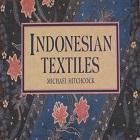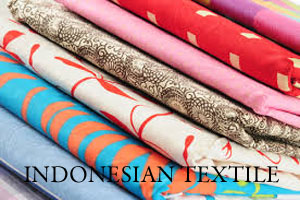
Indonesia's garment and textiles industry has seen good sales growth as consumers loosen their purse strings. Moreover, the country is doing well, partly due to weaker rupiah. However, the sector is facing major challenges amidst rising competition in the ASEAN region. Indonesia needs to strengthen capital, technology and know-how, to help meet quality and quantity of goods in the growing apparel industry. This is a challenge to attain and also an opportunity for investors.

Upstream investment in Indonesia’s textile industry is because of the healthy downstream business as garment manufacturers capitalise on rising domestic and foreign demand. Indonesian government is set to increase the value of exported textiles and garments to $75 billion by 2030, contributing 5 per cent to global exports.
Upstream business hurdles
Indonesia leads in textile manufacturing due to strong upstream and downstream business. Major local garment makers want to take advantage of this and have also upped their capital to acquire assets, which would help them streamline their supply chains. The upstream side though, has been struggling to keep up. As per Indonesian Synthetic Fiber Producers Association (APSyFI), imports of fibre doubled to around 600,000 tonnes from 300,000 in 2008. As downstream businesses keep sourcing their input materials from abroad, the domestic upstream industry has been failing to benefit from rising consumer expenditure.
The output of upstream textile products has grown through the years, but costs have gone up faster, thus straining businesses. The imperfect condition of upstream business also reflects in the industrial production index for the textile industry. This has been declining since 2010, which is in contrast to most other industries. Large and medium-sized textile businesses have declined in numbers. Trade data shows that the country’s upstream business is increasingly becoming dependent on imports, while exports grew only moderately over the past five years.
Imports of both yarn and fabrics have increased and in manmade fibre products, imports of yarn and woven fabric have outpaced exports over the past five years. Also, the imports of manmade filaments and staple fibres have grown rapidly, as the garment industry demand increased. Thus, Indonesia's upstream textile industry is struggling to ward off foreign competition.
Factors affecting upstream business
Lack of competitiveness in Indonesia’s textile industry can be put down to several factors. The use of inefficient technology, underdeveloped transportation system, power infrastructure and rising energy costs are some of them. Labour, of course, is the garment producers’ biggest worry, but not as much for the capital intensive upstream business. Indonesia also falls behind in higher-value products where local producers are concerned.
Government incentives to help textile companies have been insufficient so far and even government-sponsored training programmes and industry clusters aimed at generating local know-how and fostering integration are not that successful. Besides, the upstream business lacks competitiveness. So, since government measure so hardly effect, hopes are pinned on the private sector and foreign investors. Exporters of spinning and weaving machinery, consulting and staff-training too have an opportunity here.












